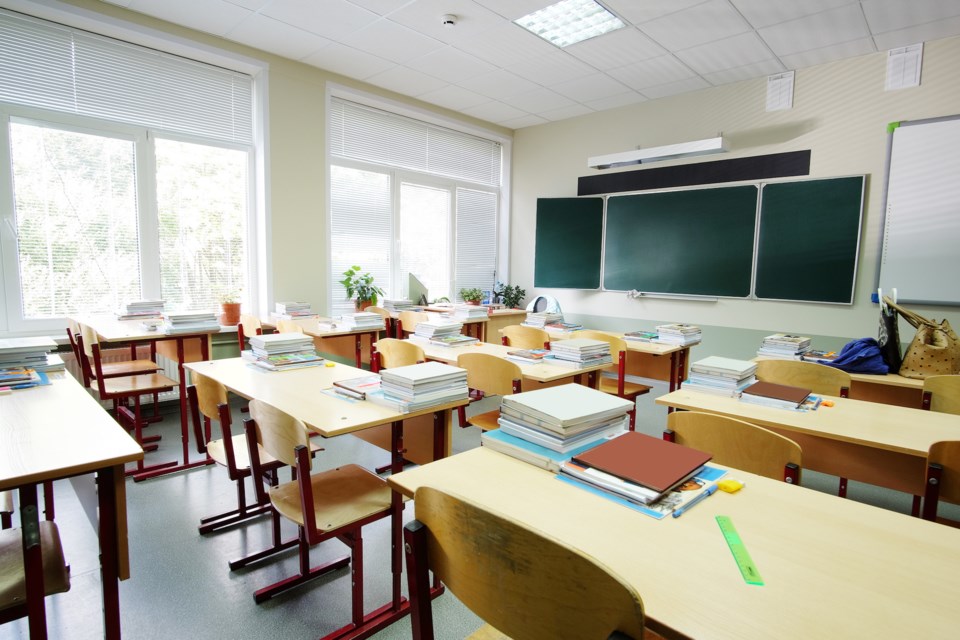NORTH BAY - A recent study from researchers at the University of Ottawa revealed “the rates of workplace violence are shockingly high” in Ontario’s public schools. Specifically, the study focused on “harassment and violence experienced by education sector workers who are not teachers”—early childhood educators, education assistants, and support staff.
The study by Chris Bruckert, Darcy Santor, and Brittany Mario, presented the findings from interviews with just under 4,000 CUPE education workers in Ontario, between early February and mid-March 2020. The researchers surveyed these members about their work experiences during the 2018-2019 school year.
Of the 4,000 people, 89 per cent “experienced a threat, attempt, or act of physical violence from one or more sources (students, parents, colleagues, administrators)” during that school year, and 70 per cent experienced “some type of physical force,” such as “hitting, kicking, biting, or being hit by a thrown object.”
Some comments the authors received from respondents detailed how “violence in the education system is becoming an epidemic and the problem is constantly being swept under the rug,” an issue that is “becoming the new norm.”
“Children are literally beating up adults,” one respondent noted, “and we are subjecting other children to this violence. Talk about traumatic.”
See: 'They aren't the same classrooms that we knew from school'
Rob Hammond, the president of the Near North Teacher’s Local of the Elementary School Teacher’s Federation of Ontario, commented on the study’s findings. “This report is my reality,” he said. “This is unfortunately what we see every day in the Near North District School Board.”
Part of the problem “is that the public really isn’t aware of how much violence there actually is in our schools,” and this violence, as the study found, “is becoming the norm.”
Hammond emphasized his comments pertained primarily to elementary schools.
When a violent incident does occur, Hammond explained, a staff member will complete an Incident Injury Report, “and I get them daily.” He does not receive these reports from educational assistants, as they are not with his union, “but there are probably double or triple” the amount compared to the number filled out by teachers.
He mentioned these educational assistants are “the unsung heroes” of the classroom, noting that over the years their job has changed from helping with academics to essentially serving “as behavioural specialists, managing behaviour rather than helping with the academics.”
“And they are the ones taking the brunt of the physical and verbal abuse.”
Hammond mentioned he could tell some “horror stories” of incidents, including a kindergarten teacher who took leave to heal from a concussion after a student struck her head with a metal chair.
See: Work with police services at mitigating school violence says Garbutt
He explained that violence in the workplace was a concern for the union before Covid, “and something that we were trying to address,” but as students returned to classrooms, the problem remains. “I wouldn’t say we’re seeing a rise; we’re seeing a continuation of the violence.”
Hammond has noticed a “steady rise” of incidents over the years, “and part of the problem is that when the government keeps pulling away funding—and I’m not just talking about education, I’m talking about funding for programs in society as well,” troubles will continue.
“When you have society taking away these support systems that help these kids, the school cannot make up for that gap,” he said. More money for support programs both inside and outside of the school would help “to stop the violence.”
Trashing classrooms has been a problem in the past, Hammond said, which creates a few difficulties for instructors. First, the adult must calm the child verbally, although this can be difficult, especially if the outburst turns physical, as “we’re not allowed to be hands on with children,” so stopping the action in progress is difficult.
Most often, the instructor will lead the class out of the room and allow the trashing to continue, keeping an eye on the child to ensure he or she does not harm themself. The second difficulty is dealing with “the trauma of the other students” who have just witnessed the outburst.
These sights can lead to a snowball effect, as some youth, after witnessing a violent act, may think “I can do it too,” and the cycle continues.
“If we had the supports in place, we could limit this,” Hammond reiterated, “but we just don’t have the supports to meet the needs of our most vulnerable children.” The school board is “doing the best it can with the limited resources it has been provided with.”
“Sometimes we don’t have solutions to problems,” he said. “We know we have problems, but we don’t have the resources to be able to solve them.”
See: Teachers want violent incidents in schools addressed
The Near North District School Board provided a statement from James Coventry, the acting manager of facilities and operations. He emphasized the board “is committed to the health, safety and well-being of our staff, students, and community partners.”
The board’s strategic plan contains four key priorities, one of which is Excellence in Innovation, and to achieve this, “we will be utilizing statistics and identified trends gathered from our online incident and injury reporting system to conduct data-driven decision making.”
Moreso, “we continue to work diligently with our union partners to address these issues, as a violence-free workplace is a right of all employees and is conducive to a healthy learning environment for students.”
However, Hammond worries that without more funding made available, the violence will continue. “It’s a very unhealthy system, and I’m afraid it’s going to get worse.”
